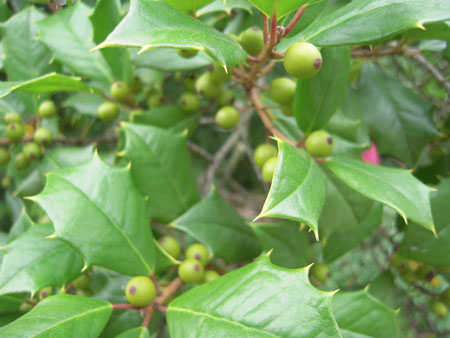Summary
Definition
History and exam
Key diagnostic factors
- presença de fatores de risco
- taquicardia
- hipertensão
- hipotensão
- miose
- midríase
- bradicardia
- estado mental alterado
- alucinações
- convulsões
Other diagnostic factors
- náuseas
- vômitos
- dor abdominal
- diarreia
- dispneia
- rubor cutâneo
- dermatite
- irritação dermatológica/da mucosa
- sangramento visível: epistaxe, melena, hematúria, hematêmese, hemoptise
- cefaleia
- dor torácica
- dor/inchaço muscular
- palidez cutânea
- hematomas frequentes
- sangramento petequial
- icterícia
- asterixis (flapping)
- ascite
- eritema palmar
- aranhas vasculares
- diaforese
- pele ressecada
- febre
- retenção urinária
- constipação
- hiperventilação
- fasciculações
- fraqueza neuromuscular
- alterações sensitivas
Risk factors
- forrageamento de plantas selvagens para comer
- preparação de chás com plantas selvagens
- suspeita ou confirmação de ingestão de plantas por crianças
Diagnostic tests
1st tests to order
- eletrocardiograma (ECG)
- Hemograma completo
- eletrólitos séricos
- creatinina sérica
- lactato sérico
- ureia/creatinina sérica
- testes da função hepática
- razão normalizada internacional (INR)
- gasometria arterial
- radiografia torácica
Tests to consider
- troponina
- níveis de digoxina sérica
- resposta à fisostigmina
Treatment algorithm
todos os pacientes
Contributors
Authors
Susan Smolinske, PharmD, DABAT, FAACT
Clinical Consultant
New Mexico Poison and Drug Information Center
Adjunct Professor
Pharmacy Practice and Administrative Sciences
University of New Mexico
Albuquerque
NM
Disclosures
SS is a member of the ToxED advisory board and consults with webPOISONCONTROL.
Cynthia K. Aaron, MD
Medical Director
Program Director Medical Toxicology
Regional Poison Center at Children's Hospital of Michigan
Professor of Emergency Medicine and Pediatrics
Wayne State University School of Medicine
Detroit
MI
Disclosures
CKA owns personal stock in Merck. CKA was on the State of Michigan Public Health Advisory Council for 3 years, and consults with RubiconMD.
Acknowledgements
Dr Susan Smolinske and Dr Cynthia K. Aaron would like to gratefully acknowledge Dr Gerald F. O'Malley and Dr Rika N. O'Malley, previous contributors to this topic. GFOM and RNOM declare that they have no competing interests.
Disclosures
GFOM and RNOM declare that they have no competing interests.
Peer reviewers
Jessamine Soderstrom, MD, MBBS, FACEM
Clinical Toxicologist
Emergency Consultant
Emergency Department
Royal Perth Hospital
Perth
Australia
Disclosures
JS declares that she has no competing interests.
Scott Phillips, MD
Clinical Faculty
Department of Toxicology
Rocky Mountain Poison & Drug Center
Denver
CO
Disclosures
SP declares that he has no competing interests.
Judith Alsop, PharmD, DABAT
Poison Center Director
California Poison Control System, Sacramento Division
University of California Davis Medical Center
Sacramento
Associate Clinical Professor of Pharmacy
University of California San Francisco School of Pharmacy
San Francisco
Clinical Professor of Medicine
Volunteer Clinical Faculty
University of California Davis School of Medicine
Sacramento
CA
Disclosures
JA declares that she has no competing interests.
Peer reviewer acknowledgements
BMJ Best Practice topics are updated on a rolling basis in line with developments in evidence and guidance. The peer reviewers listed here have reviewed the content at least once during the history of the topic.
Disclosures
Peer reviewer affiliations and disclosures pertain to the time of the review.
References
Key articles
Froberg B, Ibrahim D, Furbee RB. Plant poisoning. Emerg Med Clin North Am. 2007 May;25(2):375-433. Abstract
Halpern JH. Hallucinogens and dissociative agents naturally growing in the United States. Pharmacol Ther. 2004 May;102(2):131-8. Abstract
Gowdy JM. Stramonium intoxication: review of symptomatology in 212 cases. JAMA. 1972 Aug 7;221(6):585-7. Abstract
Burkhard PR, Burkhardt K, Haenggeli CA, et al. Plant-induced seizures: reappearance of an old problem. J Neurol. 1999 Aug;246(8):667-70. Abstract
Gummin DD, Mowry JB, Beuhler MC, et al. 2022 Annual report of the National Poison Data System(®) (NPDS) from America's Poison Centers(®): 40th annual report. Clin Toxicol (Phila). 2023 Oct;61(10):717-939.Full text Abstract
Reference articles
A full list of sources referenced in this topic is available to users with access to all of BMJ Best Practice.

Differentials
- Gastroenterite viral
- Gastroenterite bacteriana
- Infarto agudo do miocárdio
More DifferentialsLog in or subscribe to access all of BMJ Best Practice
Use of this content is subject to our disclaimer